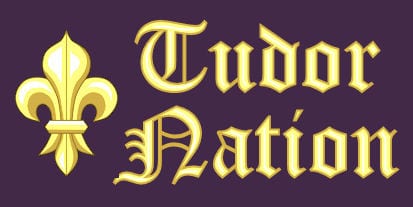Portraits of Queen Elizabeth I are familiar to most people, particularly the Armada portrait, the Ditchley portrait and the Darnley portrait. Queen Elizabeth also had prints made of her portraits and had these circulated around the country. But why did Queen Elizabeth I have so many portraits painted? To answer this question it is necessary to understand Elizabeth’s character, her past and her position as Queen of England.
People That Shaped Elizabeth’s Character
Early Childhood
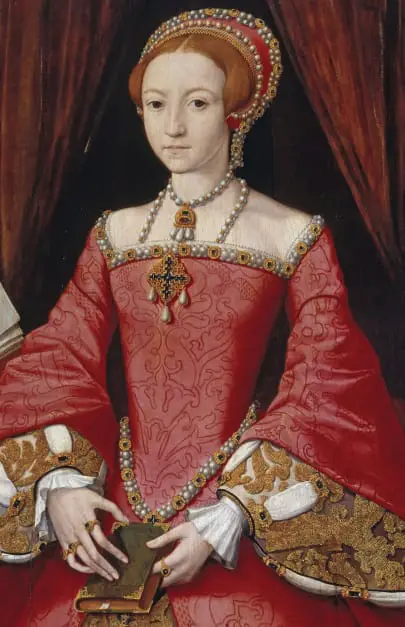
Elizabeth was the daughter of King Henry VIII and Anne Boleyn. She had a turbulent childhood. For the first three years of her life she was the Princess of the court.
After her mother, Anne Boleyn, had been executed for treason. Elizabeth was declared illegitimate. Although she had lived away from court at Hatfield Place from the age of three months, the change in status would have been unsettling for the young Elizabeth.
Jane Seymour, King Henry VIII’s third wife treated her kindly, but died in October 1537 shortly after giving birth to the son Henry had longed for, Prince Edward. The next six years saw Elizabeth virtually forgotten at Hatfield Place but she would have been aware that her father had divorced his fourth wife and executed his fifth.
Katherine Parr, her father’s sixth wife had taken an interest in Henry’s children and oversaw Elizabeth’s education. After Henry VIII’s death in 1547, Elizabeth had gone to live with Katherine Parr who had married Thomas Seymour.
Thomas Seymour
Seymour showed more than a fatherly interest in Elizabeth and it is believed that she was sexually abused by him. When Katherine Parr discovered her husband’s interest in Elizabeth she sent Elizabeth away. A few months later Katherine Parr died in childbirth and Elizabeth was deeply upset.
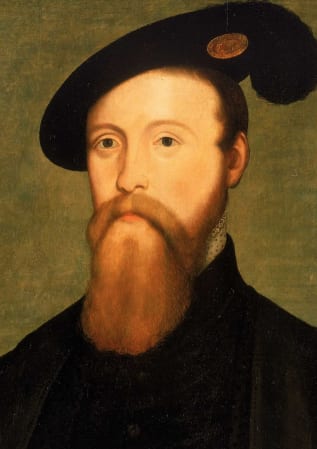
Thomas Seymour hoped to marry Elizabeth but she wisely ignored his letters and advances. He was accused of treason and executed in 1549.
Elizabeth saw little of her brother, Edward, while he was king and was rarely invited to court. She spent much of her time studying at Hatfield. After her brother died in 1553, John Dudley, Duke of Northumberland, made Lady Jane Grey Queen. However, the people rebelled and supported the accession of Elizabeth’s half-sister, Mary.
Queen Mary I
Mary I, Catholic daughter of King Henry VIII and Catherine of Aragon, restored Catholicism to England. Knowing that Protestant Elizabeth would be a focus for Protestant rebellions against her rule, she had Elizabeth imprisoned in the Tower of London.
A month earlier Lady Jane Grey had been executed at the Tower. Elizabeth also knew that her mother had been imprisoned in the Tower before her execution. One can only imagine how the 21 year old Elizabeth must have felt as she was taken by armed guard to the Tower.
Elizabeth I and Propaganda
When Elizabeth became Queen in 1558 she needed to win the support of all her people; Catholics, Protestants, and those who believed that a woman could not rule a country by herself. One of the best ways for a monarch to win support was by making a royal progress. During a progress, the monarch and court toured the country staying at noble houses to show themselves to the people. Elizabeth knew that she had many Catholic enemies who believed that she should not be Queen and that she should be replaced by Catholic Mary Queen of Scots. The events of her childhood and early adulthood would have made her extremely wary of people, especially men in power.
Knowing that it was not safe for her to travel around the country, Elizabeth chose to show herself to the people through portraits. At intervals throughout her reign she allowed portraits to be painted that would persuade people that she was a strong, pure and magnificent ruler. These paintings were then copied and distributed throughout the country.
The Most Famous Portraits of Elizabeth I
The Coronation Portrait
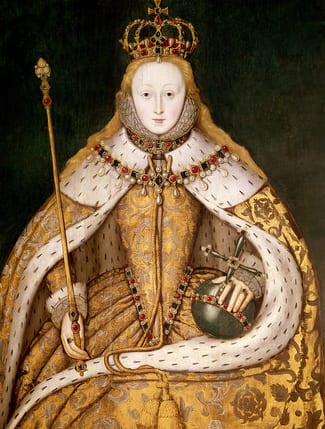
Painted in 1559 shortly after Elizabeth’s coronation. The young Queen is shown in her coronation robes which are richly decorated and lined with ermine. She is wearing the royal crown on her head. In her right hand she is holding the royal sceptre and her left is covering the royal orb showing that she has taken control.
The Clopton Portrait
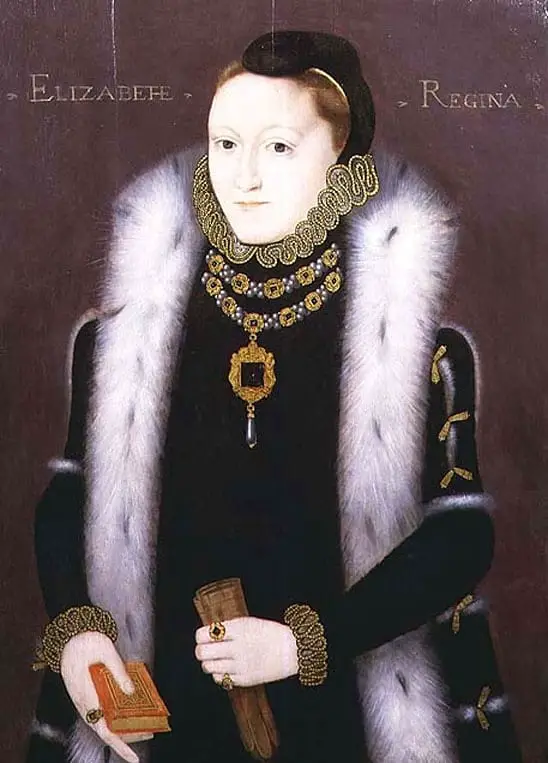
This portrait was made around 1560. Elizabeth shows herself as a true Protestant. She wears plain, undecorated robes in black and white. In her right hand she holds a small book, possibly a Bible or Prayer Book. In her left hand she holds her gloves. Black represents constancy and white sincerity.
Miniature by Nicholas Hilliard
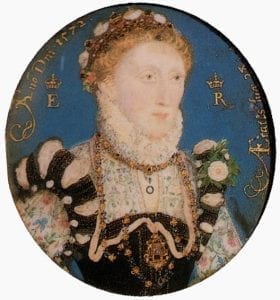
In the Tudor period, miniature paintings were very fashionable, they were often hung around the neck or at the waist. This painting by Nicholas Hilliard was completed around 1572 when Elizabeth was in her late 30s. Despite her middle age there are no lines on her face. Black and white, constancy and sincerity still a feature but her clothes and head dress are decorated with jewels. The fabrics of her clothing appear to be rich velvet and delicate lace, both would have been expensive and show that she is a rich queen.
The Darnley Portrait
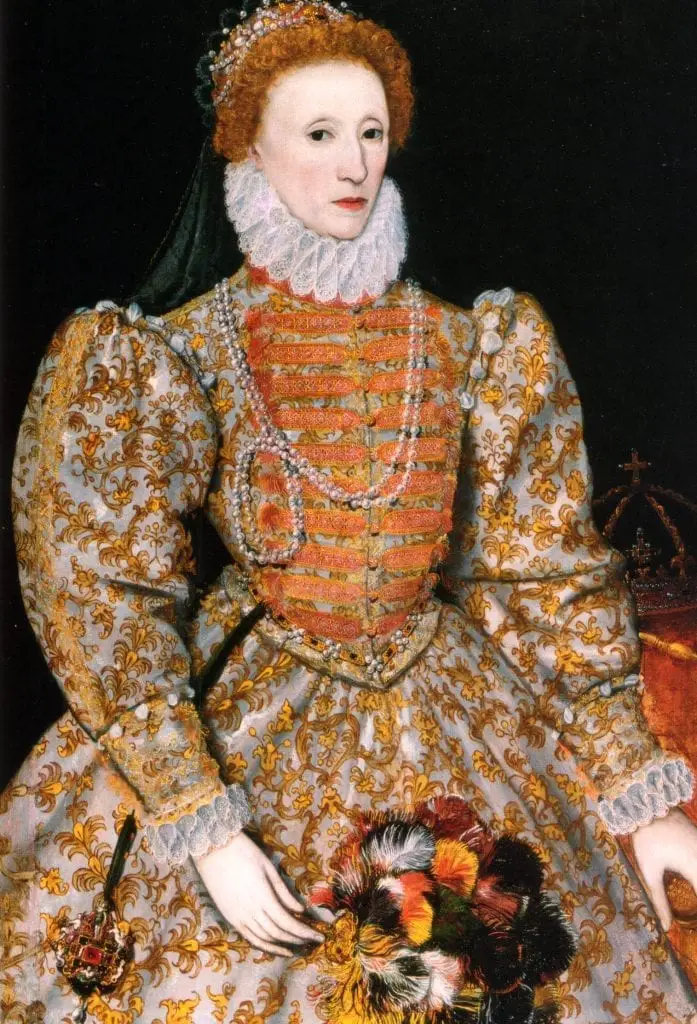
This portrait was painted around 1575 by an unknown artist. The queen is shown wearing sumptuous, richly decorated clothing and a pearl encrusted headdress. She is also wearing a double strand of pearls which are looped around her right breast. Pearls symbolise chastity and emphasis her unmarried status. The viewpoint of the painting is such that she appears to be looking down on her subjects. In her right hand she is holding a feather fan.
The Armada Portrait
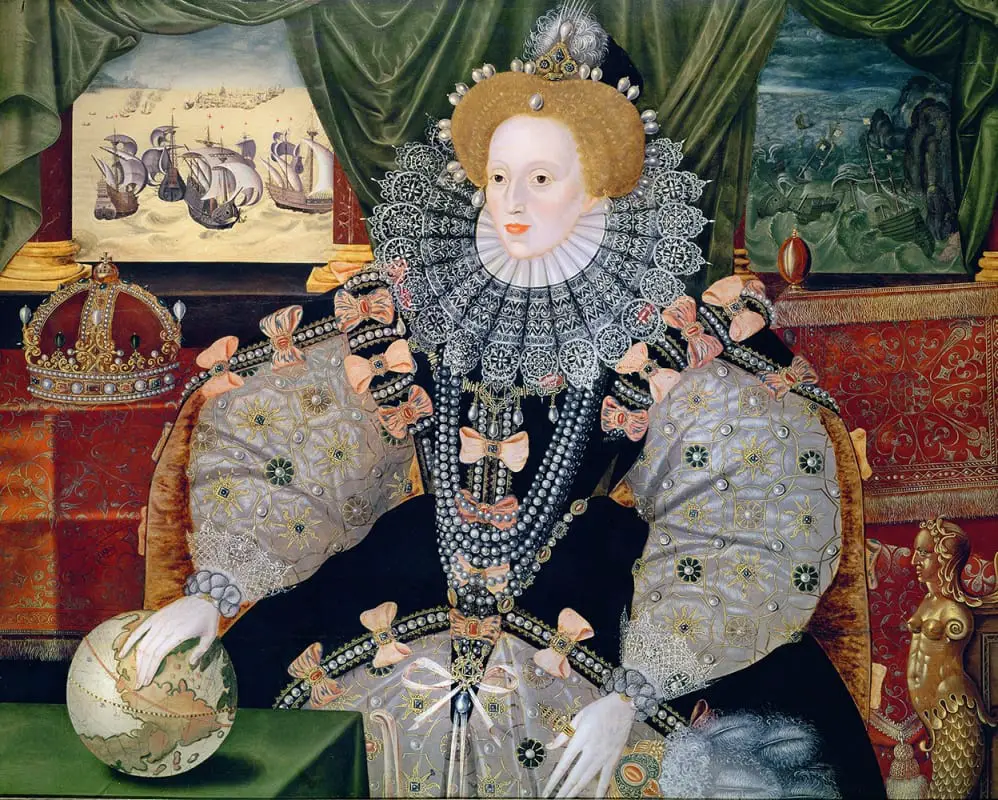
This iconic portrait was painted shortly after the defeat of the Spanish Armada in 1588. In the background, the picture on the left shows the victorious English navy sailing on calm seas, bathed in sunlight. In contrast, the Spanish ships on the right are being dashed against the rocks as they sail stormy seas. Elizabeth herself is splendidly dressed and the colours black and white feature strongly. Pearls, the symbol of chastity and purity, feature strongly in this portrait – around her neck, on her dress and in her hair. Her right hand is resting on a globe and covering north America, emphasising the new colonies that had been settled in north America. Elizabeth was 55 years old when the portrait was painted but her face is still that of a young woman. This would distance her from ordinary mortals and make her seem more god-like.
The Ditchley Portrait
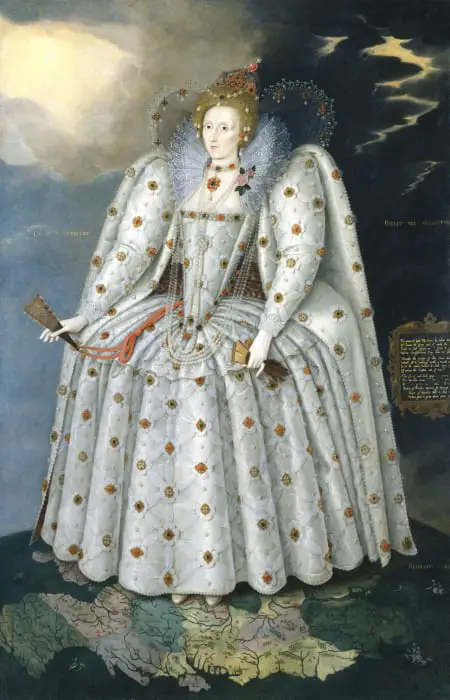
This is another iconic portrait of Elizabeth that typifies her as the virgin queen. Her beautifully decorated, full-skirted dress is white emphasising her purity and also her wealth. She is standing on a map of England firmly defining her position as queen of the land. The painting was made for Sir Henry Lee who lived in Oxfordshire and Elizabeth’s feet are on that county. She has turned her back on the stormy skies and looks towards blue skies and sunshine. This symbolises hope for the future.
The Rainbow Portrait
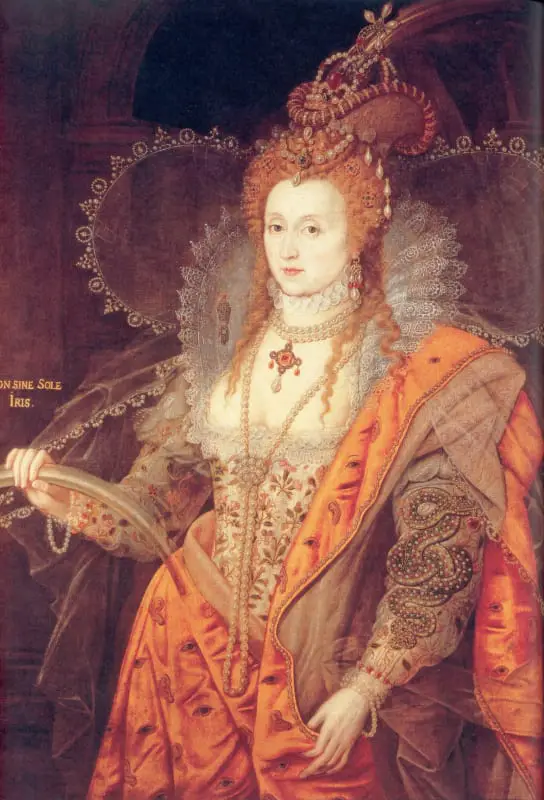
This picture was painted around 1600 when the queen was 67 years old. Her unlined skin and loose hair show her as ageless and god-like. Her dress is embroidered with eyes and ears showing that she sees and hears everything. This could be a warning to those that would conspire to bring her down. On the sleeve of her dress is a large bejewelled serpent which represents wisdom. She is standing in front of a large dark archway suggesting that she has turned her back on death. The inscription on the picture reads ‘No Rainbow Without the Sun’. In Elizabeth’s right hand she is holding a rainbow (the colours have faded over time). This together with the inscription suggests that Elizabeth is the sun and without her presence there will be darkness. It could represent the uncertainty for the future since Elizabeth had no children.
Published 2020 – Updated – Nov 17 2024
Harvard Reference for Why did Queen Elizabeth I Have So Many Portraits Painted?
Heather Y Wheeler. (2020 – 2025). Why Did Queen Elizabeth I Have So Many Portraits Painted? Available: https://www.tudornation.com/why-did-queen-elizabeth-i-have-so-many-portraits-painted Last accessed April 18th, 2025
